A display of brand loyalty
12th July 2013Since 2007, my main camera has been a Pentax K10D DSLR and it has gone on many journeys with me. In fact, more than 15,000 images have been captured with it and I have classed it as an unfailing servant. The autofocus may not be the fastest but my subjects tend to be stationary: landscapes, architecture, flora and transport. Even any bus and train photos have included parked vehicles rather than moving ones so there never have been issues. The hint of underexposure in any photos always can be sorted because DNG files are what I create, with all the raw capture information that is possible to retain. In fact, it has been hard to justify buying another SLR because the K10D has done so well for me.
In recent months, I have looking at processed photos and asking myself if time has moved along for what is not far from being a six year old camera. At various times, I have been looking at higher members of the Pentax while wondering if an upgrade would be a good idea. First, there was the K7 and then the K5 before the K5 II got launched. Even though its predecessor is still to be found on sale, it was the newer model that became my choice.
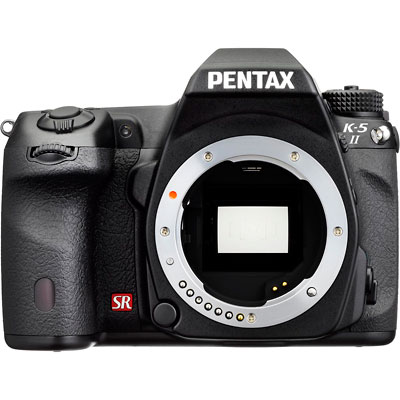
My move to Pentax in 2007 was a case of brand disloyalty since I had been a Canon user from when I acquired my first SLR, an EOS 300. Even now, I still have a Powershot G11 that finds itself slipped into a pocket on many a time. Nevertheless, I find that Canon images feel a little washed out prior to post processing and that hasn’t been the case with the K10D. In fact, I have been hearing good things about Nikon cameras delivering punchy results so one of them would be a contender were it not for how well the Pentax performed.
So, what has my new K5 II body gained me that I didn’t have before? For one thing, the autofocus is a major improvement on that in the K10D. It may not stop me persevering with manual focusing for most of the time but there are occasions the option of solid autofocus is good to have. Other advances include a 16.3 megapixel sensor with a much larger ISO range. The advances in sensor technology since when the K10D appeared may give me better quality photos and noise is something that my eyes may have begun to detect in K10D photos even at my usual ISO of 400.
There have been innovations that I don’t need too. Live View is something that I use heavily with the Powershot G11 because it has such a pitiful optical viewfinder. The K5 II has a very bright and sharp one so that function lays dormant, especially when I witnessed dodgy autofocus performance with it in use; manual focusing should be OK, I reckon. By default too, the screen stays on all the time and that’s a nuisance for an optical viewfinder user like me so I looked through the manual and the menus to switch off the thing. My brief flirtation with the image level display met an end for much the same reason though it’s good that it’s there. There is some horizon auto-correction available as a feature and this is left on to see what it offers since there have been a multitude of times when I needed to sort out crooked horizons caused by my handholding the camera.
The K5 II may have a 3″ screen on its back but it has done nothing to increase the size of the camera. If anything, it is smaller that the K10D and that usefully means that I am not on the lookout for a new camera holster. Not having a bigger body also means there is little change in how the much camera feels in the hand compared with the older one.
In many ways, the K5 II works very like the K10D once I took control over settings that didn’t suit me. Both have Shake Reduction in their camera bodies though the setting has been moved into the settings menu in the new camera when the older one had a separate switch on its body. Since I’d be inclined to leave it on all the time and prefer not to have it knocked off accidentally, this is not an issue. Otherwise, many of the various switches are in the same places so it’s not that hard to find my way around them.
That’s not to say that there aren’t other changes like the addition of a lock to the mode dial but I have used Canon EOS camera bodies with that feature so I do not consider it a step backwards. The exposure compensation button has been moved to the top of the camera where I found it very easily and have been using perhaps more than on the K10D; it’s also something that I use on the G11 so the experimentation is being brought across to the K5 II now as well. Beside it, there’s a new ISO button so further experimentation can be attempted with that to see how it does.
If I have any criticism, it’s about the clutter of the menus on the K5 II. The long lists through you scrolled on the K10D have been replaced with a series of extra tabs so that on-screen scrolling is not needed as before. However, I reckon that this breaks up things too much and makes working through the settings look more foreboding to anyone who is not so technical in mindset. Nevertheless, settings such as the the type of file to capture are there and I continue to use RAW DNG files as is usual for me though JPEG and Pentax’s own RAW format also are there. For a while, I forgot to set the date, soon found out what I did and the situation was remedied. The same sort of thing applied to storing files in different folders according to the capture date. For my own reasons, I turned this off to put everything into a single PENTX directory to suit my own workflow. My latest discovery among the menus was the ability to add photographer and copyright holder information to the EXIF metadata attached to the image files created by the camera. With legislative proposals that dilute the automatic rights of copyright holders going through the U.K. parliament, this seems a very timely inclusion even if most would prefer that there was no change to copyright law.
Of course, the worth of any camera is in the images that it produces and I have been happy with what I have been getting so far. The bigger files mean less images fit on a memory card as before. Thankfully, SDHC card capacities have grown even if I don’t wish to machine gun my photography altogether. While out and about, I was surprised to apertures like F/14 and F/18 when I was more accustomed to a progression like F/11, F/13, F/16, F/19, F/22, etc. Most of those older values still are there though so there hasn’t been a complete break with convention. The same comment applies to shutter speeds where ones like 1/100 and 1/160 made there appearance where I might have expected just ones like 1/90, 1/125, 1/250 and so on. The extra possibilities, and that is what they are, do allow more flexibility I suppose and may even make it easier to make correct exposures though any judgement of correctness has to be in the eye of a photographer and not what a computer algorithm in a camera determines. For much of the time until now, I have stuck with an ISO of 400 apart from a little testing in a woodland area of an evening soon after the camera arrived.
Since the K5 II came my way a few months ago, I have been meaning to collect my thoughts on here and there has been a delay while I brought mu thinking to a sensible close.At one point, it felt like there was so much to say that the piece became larger in my mind that even what you have been reading now. After all, there are other things that I can adjust to see how the resulting images look and white balance is but one of these.The K10D isn’t beyond experimentation either, especially since I discovered that shake reduction was switched off and it has me asking if that lacking in quality that I mentioned earlier has another explanation. Of course, actually making use of my tripod would be another good suggestion so it’s safe to say that yet more photographic explorations await.
Dispensing with temptation
26th January 2012The compact system camera arena is a burgeoning one with many manufacturers having followed Olympus into the fray. In latter months of last year, Nikon finally took the plunge though Canon have yet to do the same. Seeing offers on Olympus E-PL1 kits with a 14-42 mm zoom lens had me tempted, particularly with a price tag of the order of £250. In fact, I even got to looking into the competition too and a shortlist emerged. This also featured the Samsung NX-11 and the Sony NEX-C3 as well as the big brother of the latter, the NEX-5N.
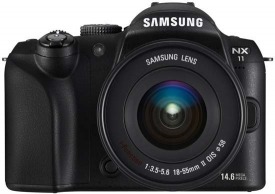
What eventually countered the allure of shiny objects was the question as to why I needed such an item. After all, I already possess a Pentax K10D DSLR and a Canon Powershot G11 and these have been satisfying my photographic needs for a while now. The DSLR may date from 2007 but it is still working well for me and, if it ever needed replacing, I’d be going for another Pentax with the K-5 being a strong contender. The Canon is doing what’s asked of it so the recent launching of the G1 X isn’t so tempting either.
The whole dalliance has me wondering about how photographic equipment changeovers come about. After all, it was around a decade ago with the DSLR revolution was in the offing if not in progress. Until then, film photography was predominant but it looks as if it got as far as it could from a technological point of view when I look back at what happened. The digital photography area was new and untapped so moving there offered new possibilities and purchases more easily justified. The end result is that very few film cameras are being made nowadays. Ironically, it’s film photography that now is untrammelled terrain for many and it is holding its own too in an era when digital photography predominates.
The same sort of newness that came with digital photography also applies to CSC‘s to a certain extent. From the heritage of half-frame 35 mm film photography, Olympus has fashioned a different type of digital camera: essentially a compact with interchangeable lenses. Was it the fact that I have no CSC that caused me to be tempted and has it happened to others too? Also, is that what got digital photography going in the first place?
It almost feels as if camera manufacturers have to keep bringing to market new models and new types of camera in order to stay in business. After all, Minolta had to sell its camera division to Sony when they failed to get going in the DSLR market quickly enough. The same thing might have happened to Pentax too with the marque passing to first to Hoya, and then to Ricoh after the firm lost its independence.
What doesn’t help is the lack of longevity of camera models. The coming of digital photography has exacerbated this situated with models being launched at a frenetic rate. In the days of film photography, a model could last on the market for a few years and there was once a time when a twenty year lifetime wouldn’t have looked so ridiculous though there were incremental improvements made over that time too. For instance, a Pentax K1000 wouldn’t be exactly the same at the end of its production run as it was at the start though the model number may be the same. That world is gone.
Camera types have done better with the SLR design lasting around 50 years so far. However, mirror-less camera technology is adding pressure like never before. Even compact cameras allow live TTL type viewing and Olympus dug into its film camera heritage to add an interchangeable lens mount to give us the first E-P1. The original PEN cameras were half-frame 35 mm affairs and, appropriately enough, their descendants have small sensors in the micro four thirds mould. Then, there’s Sony’s efforts with translucent mirrors that do not move like their SLR counterparts. Canon tried this in the 1980’s with film cameras but never pursued the genre. After that, there are mirror-less SLR-style cameras from Samsung and Panasonic that make you wonder if a full size equivalent is in the offing with live viewing and an electronic viewfinder. Olympus is doing a teaser advertising campaign at the moment and it has some wondering if an OM-D is in the offing.
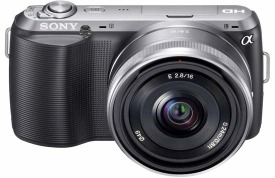
In parallel with all this, Sony is making a good impression with their CSC’s, the NEX series. These have APS-C sized sensors like many DSLR’s and in compact bodies as well. However, the feel very much is that of a compact camera and some have complained of a like of buttons on them though the photographic quality is very good. Samsung have gone for the same sensor size in their NX-11 thought they have gone for SLR styling. That may be more suitable for some than having to find settings buried in menus.
In summary, we are in an exciting if unnerving time in camera technology at the moment. On one hand, we are seeing a great deal of miniaturisation and what formerly were still cameras can do movie making as well. The latter may not be an interest of mine and it looks like a time-consuming hobby too. A lot is in flux right now and a recent court case reminded us of the difficulties in doing original work these days with image processing in Photoshop forming the basis of a victorious copyright claim. Because the number of images that are getting created everywhere, it could be hard for some to avoid this one and that could be exacerbated if the government changes the law so that intellectual property claims can be processed in the small claims courts. That sort of thing makes film photography seem attractive and it does seem that it isn’t disappearing either, even if Kodak has its financial problems. Novelty seems to change photographic tastes and it seems that film photography is novel again. It’s a changing world and who knows where it take us. Maybe a new DSLR body might make a good purchase in case CSC’s usurp their place entirely. Photographic technology is interesting yet again.
Another avalanche of new DSLR’s…
24th January 2008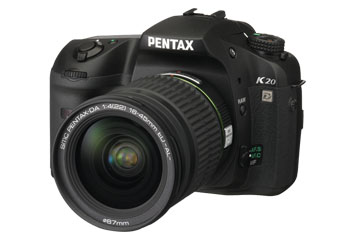
A flurry of new DSLR announcements came out today; they seem to come in droves when they do arrive but I reckon that upcoming photography shows might have something to do with it. Canon replaced its entry level offering with the 12.2 megapixel EOS 450D. Yes, I know that megapixels aren’t everything but a goodly number does make a rather good impression and Canon’s range looks a bit lop-sided again with the entry level DSLR on the surface of it having the potential for recording more detail than the next one up in their range, the EOS 40D. It almost seems that it would have been more sensible to delay the arrival of that camera until after the 450D and give enthusiasts a really impressive option. As it stands, they might end up playing into the hands of Nikon with its D300, a strong contender if I were on the market looking for a DSLR. Pentax displays no such idiosyncrasies with it 10.2 megapixel K200D and 14.6 megapixel K20D, and Samsung has also presented their variant of the latter: the GX200. It will be interesting to see reports of how all of these new arrivals perform. Launches like this do not take long to make your once shiny acquisitions look dated and that fate certainly seems to have befallen my K10D. For some reason, that reminds me that my trusty old EOS 10D needs to be sent away for cleaning, a job that has been on the to do list for while.
A rake of new cameras
30th August 2007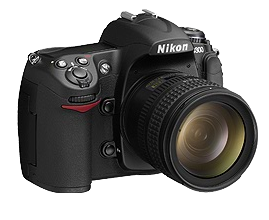 The websites of Amateur Photographer and Tech.co.uk are good places to find out what is happening in the world of digital cameras, which is just as well given the recent camera launching frenzy. It all seemed to start off with Canon’s EOS D40 and EOS 1Ds Mark III. The former seemed to be a case of playing catch up but I still think that Canon should have used the opportunity to pull ahead, at least in the megapixel stakes; Sony is working on a 12 megapixel offering and could be about cause of 12 megapixel sensors becoming the norm for consumer digital SLR’s like they did with the 10 megapixel level. I realise that megapixels aren’t everything but it has seemed to go like that thus far. Playing catch up doesn’t apply to the 1Ds Mk III with its having a monster sensor resolution of 21 megapixels and, needless to say, the improvements to the favoured DSLR of landscape photographers don’t stop there. Nikon were also in the fray with new 12 MP offerings: D300 for the enthusiast and D3 for the professional. The sensor in the latter interestingly features a sensor that sits between full frame and the more usual APS-C sizes. Panasonic have also announced a new DSLR but a number of manufacturers have new digital compacts on the market too. All of the previous makers have something as does Olympus. It was amazing to see this all happening at once but I suppose that’s how it goes. IFA has been on over the last week but some launches preceded this; it’s usually something big like Photokina that results in this sort of thing…
The websites of Amateur Photographer and Tech.co.uk are good places to find out what is happening in the world of digital cameras, which is just as well given the recent camera launching frenzy. It all seemed to start off with Canon’s EOS D40 and EOS 1Ds Mark III. The former seemed to be a case of playing catch up but I still think that Canon should have used the opportunity to pull ahead, at least in the megapixel stakes; Sony is working on a 12 megapixel offering and could be about cause of 12 megapixel sensors becoming the norm for consumer digital SLR’s like they did with the 10 megapixel level. I realise that megapixels aren’t everything but it has seemed to go like that thus far. Playing catch up doesn’t apply to the 1Ds Mk III with its having a monster sensor resolution of 21 megapixels and, needless to say, the improvements to the favoured DSLR of landscape photographers don’t stop there. Nikon were also in the fray with new 12 MP offerings: D300 for the enthusiast and D3 for the professional. The sensor in the latter interestingly features a sensor that sits between full frame and the more usual APS-C sizes. Panasonic have also announced a new DSLR but a number of manufacturers have new digital compacts on the market too. All of the previous makers have something as does Olympus. It was amazing to see this all happening at once but I suppose that’s how it goes. IFA has been on over the last week but some launches preceded this; it’s usually something big like Photokina that results in this sort of thing…
Update: I have discovered since the Nikon’s D3 has a sensor sized in the full frame domain. It might be 36mmx23.9mm rather than 36mmx24mm but the FX format comes extremely close and the advent of full frame DSLR’s being purveyed by a number of manufacturers may be upon us.